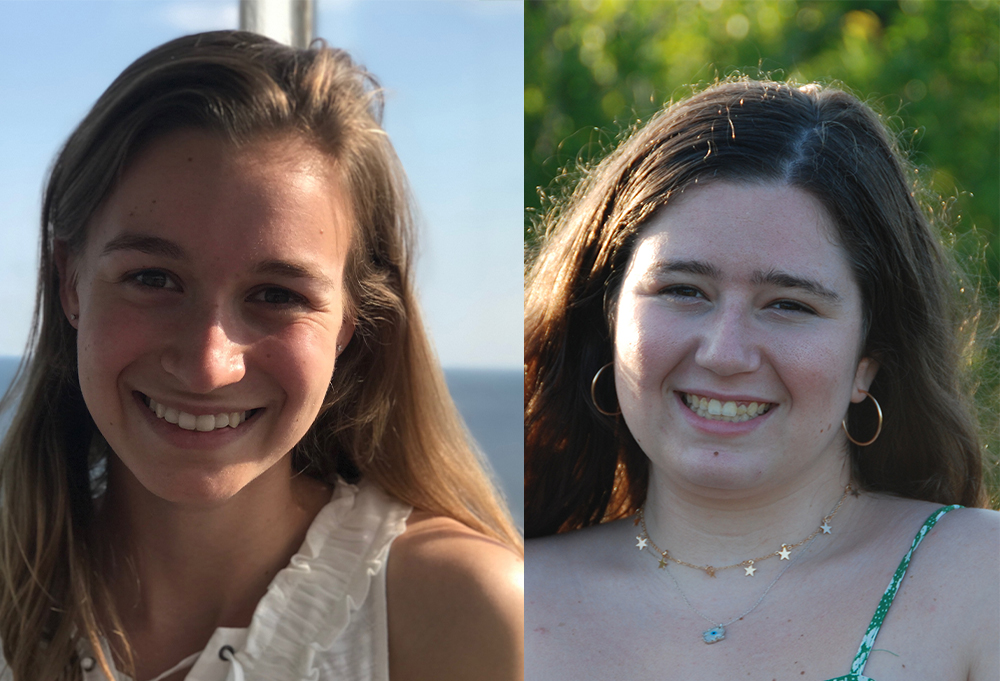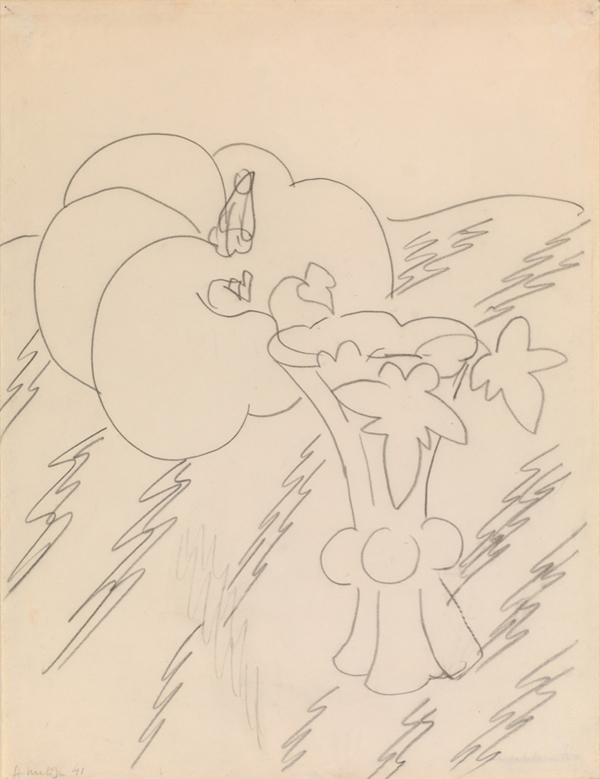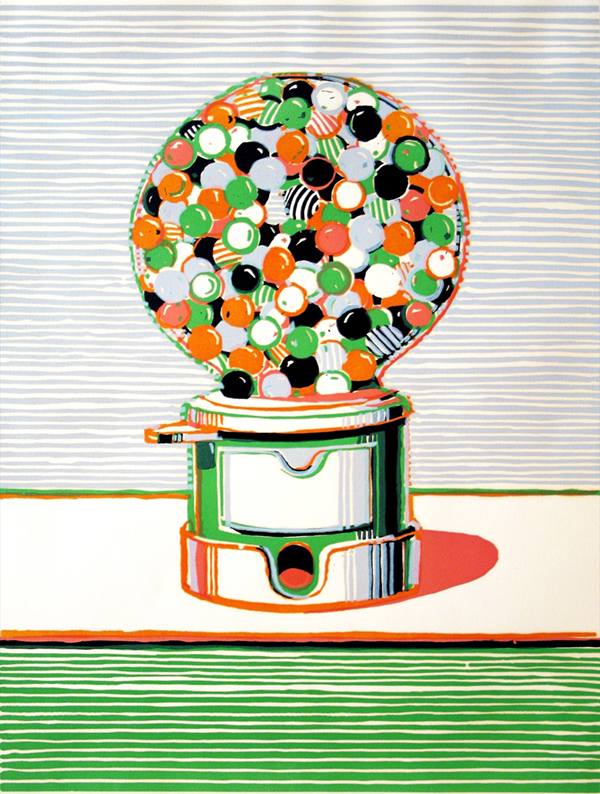Student Perspectives: An Interview with Claire Traum ’21 and Lucy Siegel ’22
By Bowdoin College Museum of Art
Claire Traum ’21 and Lucy Siegel ’22
In September 2020, Bowdoin students Claire Traum ’21 and Lucy Siegel ’22 launched a new virtual program “Art Up Close.” Working in close association with Elizabeth Humphrey, the BCMA’s curatorial assistant and manager of student programs, Traum and Siegel created a monthly platform for conversations about works of art in the Museum’s collection. Both women are art history majors and both serve as student members of the Museum’s Advisory Council. Traum combines her art history major with a minor in economics. Siegel combines her art history major with a second major in Government and a minor in English. Interested to learn more about the program and the goals behind it, co-directors Anne Collins Goodyear and Frank Goodyear interviewed the “Art Up Close” co-founders on Wednesday, November 11. What follows is an edited excerpt from their conversation.
FHG: As you probably know, the BCMA’s e-bulletin provides a terrific way to highlight activities that are going on at the Museum. One of our priorities is to tell stories about student involvement. We love the new “Art Up Close” series, so we wanted to learn more about this program and how it had come about. That said, perhaps the best place to start is to ask each of you to speak a little bit about where your interest in the arts comes from.
LS: My dad is an architect, so I have been surrounded by the arts since I was young kid. It was important to both my parents to bring us to museums, so I've been to all the major museums in New York. I was always a visual kid, but became more interested in art’s historical trajectory rather than in creating art. I ended up taking an art history class, and I just loved the Department and ended up deciding to major in it. I am especially interested in art law, and am interested in going in that direction after graduation.
CT: I similarly grew up going to museums, and my family has always celebrated the arts. In high school I started making art and I really enjoyed that process. I wanted to go to a liberal arts school and found Bowdoin. After considering several possible majors, I ended up deciding on art history because I love the department. I love looking at art and thinking about it and I also appreciate making art myself.
ACG: Could we ask you what your first art history classes were?
CT: Mine was “Introduction to Art History,” which is a fantastic class at Bowdoin taught by three professors, Professors Pamela Fletcher, Peggy Wang, and Steve Perkinson. They have nailed it.
LS: I totally agree. I think it should be a required class. My course was taught by Professors Dana Byrd, Susan Wegner, and Peggy Wang. It’s not exactly a survey. It's more like a sample of every part of art history. There are guest professors from all over the department and other departments too. That introductory course was my first real exposure to art history.
FHG: Were there specific artworks, artists, or art-related issues that interested you in that introductory class? If there was one image that you remember from the course, do you recall what that might be?
CT: I had not had much experience learning about Egyptian art, and that stands out in my mind. Another vivid memory is a great lecture by Professor Perkinson on Hans Holbein’s The Ambassadors (1533). I remember being wowed and walking out of that class a completely different person.
LS: I similarly remember classes that wowed me. I remember Professors Byrd and Wang tag-teaming a lecture on Japanese prints and French Impressionism. It was so interesting just to see the impact of Japanese prints on French Impressionism. I learned how rooted in Japanese culture those European works were. I remember being amazed by that class. I also recall Professor Fletcher’s guest lecture on Kazimir Malevich’s Black Square (1915). That’s what got me interested in modern and contemporary art. “Introduction to Art History” really taught you how to look at art.
FHG: Did you use the Museum often during the course of the semester, and were there specific works at the Museum that interested you?
LS: Yes, we would meet every week for that class in the Museum. We had a discussion group that met in the Zuckert Seminar Room to look at objects.
 CT: I've been in the Museum for many classes, and I feel like there are always a few favorite works of art that get repeated because they are just so phenomenal. One is a Matisse drawing that I love, Still Life (Naure Morte avec vase et tomate). It’s such a treasure.
CT: I've been in the Museum for many classes, and I feel like there are always a few favorite works of art that get repeated because they are just so phenomenal. One is a Matisse drawing that I love, Still Life (Naure Morte avec vase et tomate). It’s such a treasure.
LS: We were also in the Museum once a week at least. I have been in the Museum for almost all of my art history classes. I remember looking at Chinese ink drawings, ink scrolls, and being completely wowed that these were here at Bowdoin. I had never learned about Chinese ink paintings before.
ACG: That’s exciting. It sounds like for both of you, the experience of being able to see an object in the flesh really made a difference.
CT: It’s always the highlight.
LS: It’s so amazing. For me also, I always find things from visiting the Museum that I never knew I’d be interested in.
ACG: You both speak so passionately about your engagement with art. Claire, we understand that you have a special interest in San Francisco Bay Area art of the 1960s and 70s.
CT: Yes, I'm doing an independent study this semester. I'm interested in that time period. It's my favorite.
FHG: Can you tell us why?
CT: Oh, there's so many reasons. I absolutely love the style of art, and I like the emphasis on looking for an essential form. I think that the colors and the line quality are so beautiful. Some of it reflects the area, especially the light. But a lot of it is also reimagining how to show the figure or how to represent everyday scenes in a painterly way.
FHG: Are you thinking about artists like Richard Diebenkorn and Wayne Thiebaud?
CT: Yes, and David Park and Elmer Bischoff.
FHG: Lucy, are you thinking about doing a thesis or independent study next year in your final year at Bowdoin?
LS: I just started thinking about this. I think I will also do an independent project, hopefully over the summer, on a topic related to art law. I'll probably look for an advisor in the Government department, who could help me with the legal issues. But I want to explore a specific research question, such as restitution cases or something concerned with copyright law. I also think that street art is raising new and complex legal and philosophical questions. I’m doing a webinar at the end of the semester [as part of “Art Up Close”] on repatriation and thinking about Bowdoin’s own Assyrian reliefs.
ACG: Claire, were there works at the Museum that helped inspire or shape your interest in Bay Area art?
CT: I grew up in the Bay Area so I was familiar with some of the artists who worked there. But in preparing for “Art Up Close,” I discovered that the Museum has two Wayne Thiebaud prints.They capture distinctive themes in Thiebaud’s work. So, while I’m not writing about Thiebaud in my independent study, I really wanted to highlight those prints, especially because he is turning 100 years old on November 15.
ACG: I love the two prints. Wayne Thiebaud’s Gumball Machine, 1971 is, of course, iconic. But I really like Wide Downstreet, 1985, a street view of San Francisco, and this aerial perspective that we get, which is an aspect of Thiebaud’s work which may be somewhat less well known to the general public. But I feel that in that print, he reminds us that art helps us to see the world differently.
CT: Absolutely. The way he describes his work is fascinating too. I love how he describes a river of cars. I think it’s interesting to think about his mindset. He gives us a different perspective of the city.
ACG: We are very much looking forward to hearing your thoughts in “Art Up Close: Episode 4.” One of the things that stands out in your comments is that the Museum has clearly had an important impact for each of you in your intellectual lives and even in considering professional aspirations. Do you have any further comments you might like to make about the role an art museum plays on a campus such as ours?
CT: At Bowdoin I think the Museum is very important in terms of allowing students to have experiences outside of the classroom that they seek out themselves as a way to see the world differently or open up perspectives. The Museum provides so much information and gives its audiences the opportunity to choose how to maneuver through it. I think there's a lot of value in that process. Yesterday, in our seminar on “Race and Visual Representation in American Art,” which we are both taking, we had a great conversation with Elizabeth Humphrey about her upcoming exhibition [A Woman in Every Color, September 16, 2021 to January 30, 2022]. It made us all think about the importance of curators and looking at exhibitions that challenge some of the ways we have previously organized the world. I think that at Bowdoin there’s a lot of room for that type of discussion and programming to take center stage in thinking about how we view racial identity and how we set up an exhibition that includes voices that may have previously not been centered. I think the Museum in that context is incredibly important and rich.
LS: Yes, I definitely second that. The Museum has an interesting platform to expand conversations about race. And this is not just how we curate art history, but about how we think about history in terms of race and how that contributes to our culture today. I feel that the Museum has a way in to these complex topics by providing access to the art—even just visual access in this COVID era. When we were first talking about the webinars we sent out a survey asking art history majors about the topics they wanted to hear about. There was an overwhelming interest expressed in protest art and in art about the Black Lives Matter movement. So that’s why we dedicated our first webinar to that topic, "Protest Art and Black Lives Matter", led by Elizabeth Humphrey. I think students want to learn about that.
FHG: Could I ask you to speak about the origins of “Art Up Close?” Where did the idea come from, and what are your hopes for the series?
LS: I was interning virtually over the summer and a lot of what we did was to attend webinars at museums. So about twice a week the Whitney Museum of American Art had a series like this, and I really enjoyed it. I wanted to engage with the Bowdoin collection this way and to think about the art that we have at the Museum. I had become the Bowdoin Student Government (BSG) representative to the Advisory Council, and I knew there was another person who served as a representative. So that’s how I met Claire. She was super helpful and has been a huge part of all the brainstorming.
ACG: How interesting!
CT: It’s been such a highlight of this unusual semester. The whole purpose of the series is to connect students, and it gave me a chance to meet a new friend, which is so great. We've been able to work with Elizabeth Humphrey, the BCMA’s curatorial assistant and manager of student programs, who is just amazing. She was so kind to do the first webinar, which was fantastic. Other inspirations for our format came from the Frick Collection and the Anderson Collection at Stanford University. We liked its strategy of zooming in on a specific object, and we decided that that would be the best format for us. “Art Up Close” has tended to focus on an object from the Museum. We’ve learned you can use it to develop a theme that goes beyond that specific artwork. We’ve also been keeping them short because Zoom fatigue is real. Scheduling can be hard, so we reached out to the registrar’s office and picked a time when nobody has class.
FHG: What's the feedback that you've received from those who have attended?
CT: It’s been very positive from those who have attended. The Orient has reached out a couple times, and we get lots of questions in each webinar. I think there's interest on campus. But we think we can benefit from seeking some feedback and maybe making some changes.
FHG: Could you please tell us about the remaining “Art Up Close” programs for the semester?
CT: Next week I will be presenting on California art after W orld War Two, and specifically looking at Wayne Thiebaud’s prints. I'm probably going to focus mostly on his Gumball Machine, 1971, but we will see.
orld War Two, and specifically looking at Wayne Thiebaud’s prints. I'm probably going to focus mostly on his Gumball Machine, 1971, but we will see.
FHG: And, Lucy, what about you?
LS: Next week, I'll be moderating Claire's presentation. And then in early December I will be talking about the Assyrian reliefs. I'll be probably doing a brief overview of their history and then discuss questions related to repatriation. It’s an extremely complex topic, so I hope to provide an opportunity for discussion.
FHG: If you could invite one person to be a guest on the “Art Up Close” program, who might that one guest be?
CT: I would want Wayne Thiebaud.
FHG: We’ll bring the cake!
LS: I think I would want to invite Mickalene Thomas. She is my favorite artist of all time. I saw her exhibit at the Art Gallery of Ontario a couple years ago. It was amazing. I would love to hear her thoughts not only about art today, but also about art history, because a lot of what she does as an artist is to appropriate and transform historic works of art.
FHG: Claire, what would you ask Wayne Thiebaud?
CT: I would like to ask him how he saw the relationship between his work as an artist and as a professor.
ACG: One of things that has impressed me so much about the two of you is the way in which you have generated a new program and a new strategy for being involved with the Museum through “Art up Close.” I wondered if you had any advice or thoughts for your fellow students about what it has meant for you to be involved with the Museum?
LS: I love the Museum. It’s a refuge of sorts on campus. It’s a space where we’re still intellectually engaged the way we want to be—part the reason we came to Bowdoin in the first place. But it challenges you without taxing you. Going to college with a museum was the only thing I looked for in a college because I knew it was that important to me.
CT: You asked about advice. One thing I've been reflecting on is to “just ask.” That is something that Lucy and I were grateful that we did. We asked a question of the Museum and the response was really special. It was kind of like, “OK, yeah, let's do this.” When you just ask the question, it opens the conversation. I think that’s a theme for all of this. I hope students continue to just ask.
ACG: That's beautiful. Thank you.
FHG: This is been terrific. We really appreciate the opportunity to have this interview.
Illustrations:
Still Life (Nature Morte avec vase et tomate), ca. 1941 by Henri Matisse. Bequest of William H. Alexander, in memory of his friend, Howard Hoyt Shiras, M.D. Bowdoin College Museum of Art.
Gumball Machine, 1971, five color linocut, by Wayne Thiebaud. Museum Purchase, Barbara Cooney Porter Fund. Bowdoin College Museum of Art.